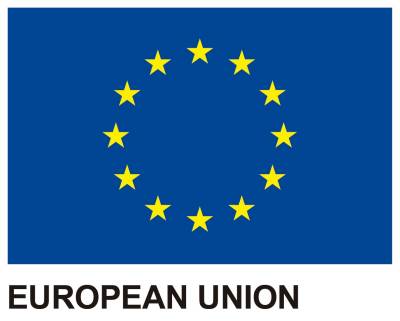In 2020, over 90 million people worldwide chose Klarna for purchasing, making payments and managing their finances.
Founded in Sweden in 2005, it is one of the most highly valued private fintechs in the world, currently estimated to be worth $45.6 billion. It has been present in Spain since last year, where it already has one million users.
What has entering the Spanish market meant for Klarna?
Spain was Klarna's gateway to Southern Europe. We started our business here in July 2020 with Michael Kors and H&M. One year on, Klarna is a growth partner for more than 300 Spanish brands (including Spanish retail giants, such as Desigual) and the digital economy, with one million users enjoying Klarna's "Pay In 3" service. We are also one of the main sponsors of two of the most important Spanish fashion events: Mercedes-Benz Fashion Week Madrid and Madrid Es Moda, which demonstrates our firm commitment to Spanish designers and to Madrid as one of the world capitals in this field.
What are the company's short- and medium-term objectives in Spain?
Our priority now is to continue our track record in the business development that we have experienced during the first half of 2021. The Spanish market is growing and an increasing number of consumers are looking for flexible payment solutions that give them more control and purchasing options. At the same time, we want to be a real catalyst for growth for the brands we partner with, whether these are large or small, helping them to build a loyal customer base.
Why did you choose to set up your Hub in Madrid?
With Klarna's exponential growth and strong performance in Spain, we saw Madrid as an ideal location to complement our other technology hubs across Europe. Madrid has a large pool of talent and good universities, which also means that more and more professionals who once looked for career options outside Spain are looking to return to their home town.
We also believe it is a very positive sign that Madrid has established itself as a European benchmark for the high-tech industry and is attracting more and more investors and startups to the region. According to INE (Spanish Statistical Office) data, the capital currently accounts for 26% of R&D expenditure in Spain and is already the third most important functional urban area in Europe. This further emphasises our long-term commitment to Spain, we want to be a growth partner for the Spanish economy.
How many people work for Klarna in Spain? What are their professional profiles?
The Klarna Spain team is made up of 50 professionals at the moment. We are currently focused on recruiting product development profiles, including engineers, product managers, designers and data science and analytics experts for our technology project.
Our team forms a diverse community, where the different skills, experiences and perspectives of each employee bring new ways to innovate and create. Innovation and technology breakthroughs are part of our offices' DNA, spread over 3 continents and employing over 90 nationalities. Our ultimate goal is to provide employees with a stimulating work environment where they can be themselves and contribute with great solutions based on their experience.
What payment method do you offer in Spain?
The key payment method in Spain is "Pay In 3", which allows consumers the choice of paying for their purchases in three interest-free instalments, quickly and easily. This allows them to have greater control and flexibility over their spending, an ideal solution especially for customers who shop online. Paying with Klarna saves them from having to pay out a large amount of money all at once, so they can spread the cost over time. There is no interest when customers pay on time.
In addition to this service, Klarna has recently launched its new all-in-one application that will revolutionise the way people shop using deferred payments. This will enable consumers to shop in all online shops with Klarna's "Pay In 3" method, regardless of whether or not they are affiliated with the company. Among its new features, users will be able to explore exclusive offers, access personalised content based on their interests, get an overview of their spending, pay with a single click, and much more.
Does Klarna's payment service emerge from a crisis even stronger than before?
At a time of hopeful post-pandemic recovery, Klarna is committed to being a key partner for brands. At the same time, we aim to give users more flexibility and control, better offers and more value for money.
Mobile commerce is in this respect continuing to grow at a rapid pace. Retailer app downloads have increased by 36% in the last two years and in-app purchases by 54%. While the rise of ecommerce has made shopping more accessible than ever, it has also created friction in the process. Today's users demand integrated experiences that meet their specific needs while saving them time and money. A recent survey by Klarna revealed that 68% of Spanish consumers now shop more frequently on their mobile phones than they did two years ago, before the pandemic. However, 70% would choose a single shopping app that allows them to perform multiple actions, rather than having to switch between apps. That's why we recently launched our all-in-one app, to continue to be a real growth catalyst for our partners and help them build a customer base.
Why are fintechs gaining ground on traditional banking?
Because they have managed to adapt to the needs of today's consumers, who are looking for the most convenient, fast and flexible option. They are conscious of their budgets and are increasingly moving away from traditional forms of credit towards more transparent and innovative payment options. An example of this is the slump in credit cards in the last 5 years by almost 20% (from 52 million to just over 37 million), according to data from the Bank of Spain.
Klarna allows consumers to buy on their own terms, as well as providing control and transparency. It also has a number of competitive advantages in an industry that is more targeted than ever. Klarna users will not be charged interest or fees if they pay on time, and everything is completely transparent at all times. Moreover, Klarna works with them on a more genuine, personal level, an essential aspect that traditional banks have lost.
Is Klarna only used for online commerce or also in physical commerce?
Klarna users can pay by using the app in physical stores and enjoy the same benefits as they would online. Forecasts indicate that global retail sales will reach $27 trillion by 2022 and Klarna is uniquely positioned to meet the accelerating demand in both online and in-store markets. As for the latter, we are present in 78,000 physical stores globally.
What is Klarna's user profile?
All ages. Our services are aimed primarily at purchasers who value convenience, flexibility and financial control. We attract financially and digitally savvy customers who are looking for effortless and secure ways to shop. To give you an idea, Klarna already handles 10% of all online transactions in Europe and we process over 2 million transactions per day.



